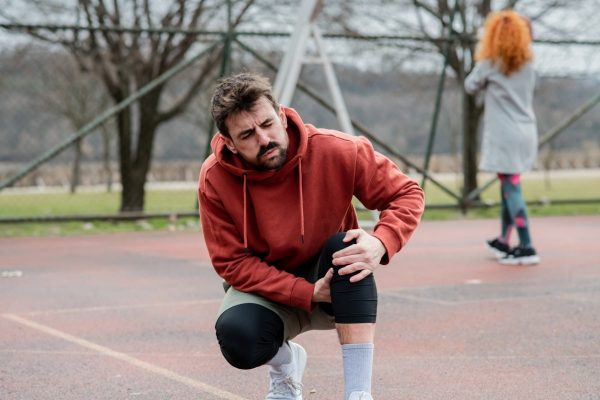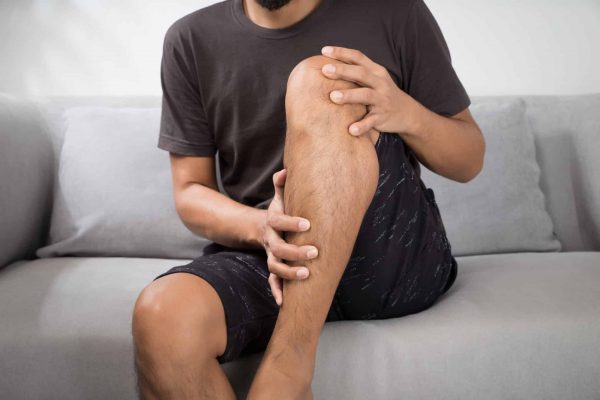
Patellar tendon strains, often referred to as “jumper’s knee,” are a common but frustrating injury, particularly for athletes and active individuals. These injuries can be notoriously difficult to heal, leading to prolonged discomfort and disruption of daily activities. Understanding why patellar tendon strains are challenging to recover from and how integrated care approaches like those offered by CARESPACE can facilitate healing is essential for anyone dealing with this condition.
The Complexity of Patellar Tendon Strains
The patellar tendon is a critical structure in the knee joint, connecting the patella (kneecap) to the tibia (shinbone). This tendon plays a vital role in the extension of the knee, allowing for activities such as jumping, running, and kicking. Due to its involvement in high-stress activities, the patellar tendon is prone to overuse injuries.
Several factors contribute to the difficulty in healing patellar tendon strains:
1. High Load and Stress: The patellar tendon is subjected to significant mechanical stress, especially in athletes who engage in repetitive jumping or running. This constant strain can lead to microtears and degeneration over time.
2. Limited Blood Supply: Tendons generally have a poor blood supply compared to muscles. The limited blood flow to the patellar tendon means that the delivery of essential nutrients and oxygen required for healing is slower, prolonging the recovery process.
3. Chronic Inflammation: Repeated stress on the patellar tendon can cause chronic inflammation, leading to a cycle of pain and swelling. Chronic inflammation can impair the body’s natural healing mechanisms, making it harder for the tendon to repair itself.
4. Biomechanical Issues: Poor biomechanics, such as improper alignment of the knee or imbalances in muscle strength, can exacerbate stress on the patellar tendon. Addressing these underlying issues is crucial for effective healing but can be complex and time-consuming.
How CARESPACE Can Help
At CARESPACE Health+Wellness, we understand the multifaceted nature of patellar tendon strains and offer a comprehensive, client-focused approach to treatment. Our multidisciplinary team, including physiotherapists and chiropractic doctors, collaborates to create personalized, coordinated care plans that address the root causes of the condition and promote effective healing.
The Role of Physiotherapy
Physiotherapists play a crucial role in the rehabilitation of patellar tendon strains. Their expertise in movement and exercise therapy is essential for restoring function and strength to the affected area. Here’s how physiotherapy can help:
1. Assessment and Diagnosis: A thorough assessment by a physiotherapist helps identify the severity of the patellar tendon strain and any contributing factors such as muscle imbalances or biomechanical issues.
2. Exercise Prescription: Tailored exercise programs are designed to strengthen the quadriceps and surrounding muscles, improve flexibility, and enhance knee stability. Eccentric exercises, in particular, are effective in promoting tendon healing and reducing pain.
3. Manual Therapy: Techniques such as soft tissue mobilization, myofascial release, and joint mobilizations can help reduce pain, improve circulation, and enhance tissue flexibility.
4. Modalities for Pain Relief: Physiotherapists may use modalities such as ultrasound, electrical stimulation, and ice/heat therapy to manage pain and inflammation, facilitating a more comfortable recovery process.
5. Education and Prevention: Educating clients on proper techniques for activities and providing guidance on modifying activities to reduce stress on the tendon are key components of physiotherapy. This helps prevent re-injury and promotes long-term tendon health.
The Role of Chiropractic Care
Chiropractic doctors at CARESPACE complement physiotherapy by addressing musculoskeletal imbalances and ensuring proper alignment of the knee and related structures. Here’s how chiropractic care can aid in the healing process:
1. Joint Adjustments: Chiropractic adjustments can help improve joint function and alignment, reducing unnecessary stress on the patellar tendon. This can alleviate pain and enhance the overall mechanics of the knee.
2. Soft Tissue Therapy: Techniques such as Active Release Techniques (ART) and Graston Technique are used to break down scar tissue and adhesions in the tendon, promoting better healing and flexibility.
3. Holistic Approach: Chiropractors often take a holistic approach, considering the entire kinetic chain. They assess and address issues in the hip, lower back, and ankle that might contribute to knee problems, ensuring a comprehensive treatment strategy.
4. Client Education: Chiropractors provide valuable insights into lifestyle modifications, ergonomics, and posture corrections that can prevent further strain on the patellar tendon and support overall joint health.
Integrated Care for Optimal Results
The integration of physiotherapy and chiropractic care at CARESPACE ensures that all aspects of the patellar tendon strain are addressed. This multidisciplinary approach offers several benefits:
1. Coordinated Treatment Plans: By working together, physiotherapists and chiropractors develop a cohesive treatment plan that maximizes the effectiveness of each modality. This ensures that clients receive the most appropriate and comprehensive care.
2. Enhanced Communication: Regular communication between practitioners ensures that any changes in the client’s condition are promptly addressed, and treatment plans are adjusted accordingly.
3. Faster Recovery: The combination of therapeutic exercises, manual therapies, and holistic care accelerates the healing process, helping clients return to their normal activities more quickly.
4. Prevention of Recurrence: By addressing both the symptoms and underlying causes of patellar tendon strains, the integrated care approach reduces the risk of re-injury, promoting long-term tendon health.
Healing patellar tendon strains can be challenging due to the high stress placed on the tendon, limited blood supply, chronic inflammation, and biomechanical issues. However, with the integrated care approach offered by CARESPACE, clients can benefit from a comprehensive treatment plan that combines the strengths of physiotherapy and chiropractic care. Our team of multidisciplinary practitioners works together to provide personalized, evidence-based care that addresses the root causes of the condition and promotes effective, long-lasting healing. If you are struggling with a patellar tendon strain, contact CARESPACE today to learn more about how our coordinated care plans can help you achieve your health and wellness goals.




